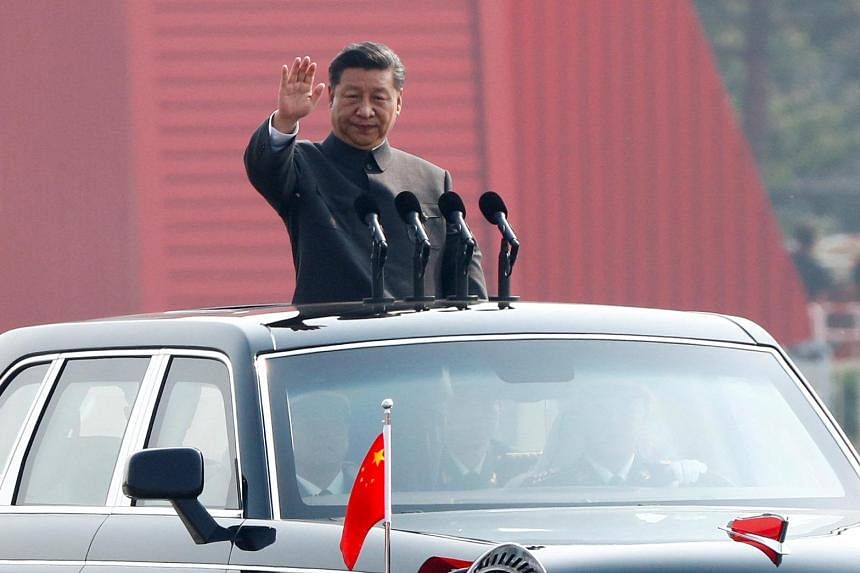Gallup covered a wide variety of measures of American public opinion this past year, many of which have been admirably addressed in the recent review by my colleagues Mohamed Younis and Mary Claire Evans. Four big-picture trends in particular caught my attention -- trends that, taken together, have significant import for the future of our democracy.
The first of these is the continuing decline in Americans’ confidence in institutions. As my colleague Lydia Saad summarized in her report on Gallup’s findings earlier this year: “Americans’ confidence in institutions in 2023 represents the continuation of the historic confidence deficit recorded a year ago. None of the 15 institutions rated annually managed to repair their images, with many remaining at or near their all-time lows.” The downward trend in confidence varies by institution, of course. But as Lydia notes, the big-picture conclusion is that Americans are less and less likely to say they have confidence in society’s way of dealing with things like healthcare, education, the role of big business and governance.
Along these same lines, Americans’ overall satisfaction with the way things are going in the U.S. is very low (19% in November), as are approval of Congress and ratings of the economy.
The second trend is the increasing tendency for people to say that certain behaviors relating to sexual reproduction and marriage are morally acceptable. In other words, there is less agreement on normative restrictions on our behavior, and more of what was formerly taboo in our culture has now moved within the realm of acceptability.
The third trend is the decline in Americans’ identification with a religion and a concomitant decrease in religious behavior. These trends have been underway for quite a while, particularly the increase in the percentage of Americans who say they don’t have a religious identity -- otherwise known as the religious “nones.” Additionally, fewer Americans are members of churches or other religious institutions, and church attendance (although still difficult to measure with the pandemic’s disruption) is down.
Religion has historically been an authoritative force underlying and legitimating moral and values norms and, in some instances, society’s systems and structures. As religion’s influence wanes, people can become more likely to view these aspects of society as arbitrary or irrelevant.
The fourth trend is the well-documented increase in political polarization -- the power of one’s political identity to shape one’s outlook not only on politics, but on society, the economy and culture. My review earlier this year showed that Republicans and Democrats differ, often significantly, on most of the 24 policy and lifestyle issues we measured. (The increase in the power of political identity in Americans’ lives has accompanied the decrease in the power of religious identity in Americans’ lives. Some humans looking for a source of authority to help anchor their worldviews and approach to life may be turning to politics to fill the vacuum created by religion’s decreased relevance.)
These trends suggest a general crisis in confidence among Americans, or what I would call a decline in normative legitimacy. This can have consequences. Sociologists tell us that societies must have shared expectations of the ways to handle major societal challenges -- accepted standards and ways of approaching the core elements of society’s functions. Otherwise, chaos rules. Societies also need informal rules (norms) governing behavior that don’t involve actual legal restrictions.
What Is to Be Done?
The question of interest, of course, is how should society deal with this shift in perceptions of legitimacy?
We can look at these shifts in American public opinion as representing a report card on how America is doing these days (the people’s answer: not well!). The decline in confidence in such institutions as education, the healthcare system, the media, big business and, in particular, the nation’s political system can be viewed as rational responses on the average American’s part as they evaluate how these institutions are fulfilling (or not fulfilling) their objectives. And the decline in adherence to moral and values norms may be rational as well, under the assumption that norms have to evolve. Some 100 years ago, norms essentially prevented women from participating in many aspects of society and, particularly in the South, norms prevented Black Americans from participating in many economic, social and political aspects of society. Most would argue that changing those norms has been beneficial for society.
From this perspective, we can take the public seriously and define the crisis in normative legitimacy as a call to action -- highlighting the deficiencies in American society that need addressing.
Indications of a More General Growing Cynicism
There may, however, be more to the decline in perceptions of legitimacy than just a specific response to malfeasance in the nation’s institutions and a need to update obsolescent norms. We may be entering an era defined by fundamentally skeptical, cynical and negative views of social institutions and structures. We can call this the age of arbitrariness -- the idea that social constructs are arbitrary and have no inherent legitimacy.
There are a number of possible reasons for this. Americans are in a much more intensive information environment today, and much of the information that does reach us is one-sided, critical, partisan and reaction-generating in nature -- designed to tap emotions and increase clicks and views. And there is no question that political polarization is essentially defined by the view that policies and approaches associated with the other party are illegitimate, wrong and injurious to the nation. This increases the general tendency for Americans to adopt as second nature a more critical, if not cynical, view of systems and structures. (One recent example is the big drop in the public’s trust in higher education, particularly among Republicans, who, data show, are critical of the alleged takeover of the nation’s colleges and universities by liberal elites.)
Plus, the incentive structure in many aspects of today’s political realm encourages politicians to spend time criticizing and discrediting their opponents and their proposals more than it encourages them to talk about big-picture positive solutions. This too can amplify a climate of cynicism. (This occurs despite survey evidence that Americans would like politicians to seek compromise rather than adhere to partisan and ideological rigidity.)
And contemporary talking points on both sides of the political aisle tend to encourage the public to adopt a jaundiced view of society’s institutions. Conservatives focus on criticisms of the “corrupt Washington establishment,” the “deep state” and the Washington “swamp.” Liberals focus on criticisms of those who have power, wealth and privilege as oppressors of minority and disadvantaged segments of society. Both of these approaches can decrease confidence and trust in the way society is arranged.
Bottom Line
Survey data provide a valuable indication of a deepening crisis of legitimacy facing our society. All societies must have shared agreement on solutions, norms and accepted ways of behaving. But agreement among U.S. residents on the value of many institutions is decreasing, and there is less and less acceptance of norms that proscribe a number of moral behaviors.
The apparent increase in cynicism about society’s institutions is fueled partly by partisanship, which conditions us to be skeptical of the other side’s arguments and positions. Cynicism is also fueled by the elite class’s tendency to view life as a conflict between those with power and wealth and those without -- conditioning us to view policy-related arguments and positions as illegitimate efforts to maintain a status quo that benefits some and not others. And cynicism is fueled by growing populist criticism of what are perceived as elite, out-of-touch politicians and institutions.
Certainly, as I noted, a logical solution to the public’s loss of confidence is to fix what is wrong -- that is, improve government, healthcare, education, the economy and so forth. But the very nature of a critical worldview, and the structures of U.S. government that require consensus to achieve policy change on most issues, operates to lower the probability of majority approval for such policies.
Clearly, something needs to be done. We as a society are focused more on internal conflict and what’s going wrong than on what society needs to do to functionpositively and on what can go right. Our society faces a whole host of crucial challenges and threats -- both external and internal -- and a deeply cynical and divided population of citizens who don’t have much confidence in the society’s institutions and values isn’t a solid foundation upon which to find solutions


 Photo credit: Maxar Technologies
Photo credit: Maxar Technologies Photo credit: Maxar Technologies
Photo credit: Maxar Technologies


 Siberian journalist Maria Ponomarenko was sentenced in February to six years in prison, after spending nearly a year in pretrial detention.
Siberian journalist Maria Ponomarenko was sentenced in February to six years in prison, after spending nearly a year in pretrial detention.
 "The foundation of civil society has been destroyed,” says Mariana Katzarova, the first UN special rapporteur on the situation of human rights in Russia.
"The foundation of civil society has been destroyed,” says Mariana Katzarova, the first UN special rapporteur on the situation of human rights in Russia.


 People gathering to observe the eruption of the Mauna Loa volcano in Hawaii on Dec 1, 2022.
People gathering to observe the eruption of the Mauna Loa volcano in Hawaii on Dec 1, 2022.





2023 has been a huge test for the U.S. entertainment industry. The remnants of COVID-19, historic strikes which saw the end of work for several months, the rise of streaming platforms changing the rules of the game. But despite significant assaults on the business, U.S. cinema has been surprisingly resilient, according to one entertainment expert.
Karen Krizanovich, a film journalist and writer based in Chicago, shared her insights on the evolving landscape of the U.S. entertainment industry with CGTN Europe, shedding some light on the challenges and trends that emerged in 2023.
One of the key events this year, she said, was when more than 170,000 people working in the U.S. entertainment business, including high profile actors, walked out on their jobs. One of the biggest examples of industrial action in the industry, the strike came about over the dramatic changes in the industry following the arrival of online streaming services like Netflix and the possibility of computer-generated script writing.
Reflecting on the aftermath of the four-month-long hiatus, Krizanovich explained that many productions were halted, others were delayed, while a few proceeded as scheduled. But the extended period of crew unemployment prompted a scramble to resume productions, creating a domino effect, impacting numerous projects.
"The knock on effect is, number one, we've got a huge industry that's desperate for work and really in bad trouble as far as that goes," Krizanovich told CGTN Europe. "But also the studios and smaller independents are really wondering about where their money's going to go best and where they're going to optimize this need for new productions."
One of the key events this year was when more than 170,000 people working
Krizanovich also addressed the uncertainty surrounding anticipated movie releases. Several highly anticipated films, including the second part of 'Dune', faced delays as studios refrained from releasing them without a robust promotional strategy.
"The studios are not going to release these unless they've got other things in the pipeline. So this is why they're holding back," she said. The absence of proper film promotions, owing to the strikes, further complicated release plans.
"If you think about it, films are promoted by their actors," said Krizanovich. "At film festivals, we've had the designers and the directors talking, which has been really strange."
Despite the ongoing knock on effect, that will now change. And luckily, it wasn't all doom and gloom for Hollywood this year.
Barbenheimer
Two standout movies of 2023, 'Barbie' and 'Oppenheimer', have given new hope for the industry, Krizanovich said, stating they had been significant contributors to reinvigorating the cinematic experience after COVID-19.
"They've done very, very well. Gerta Gerwig's Barbie has earned over $1.18 billion so far, and it's still delighting audiences all over the place. And Oppenheimer, which is three hours of science and spectacular visuals, has done almost 1 billion itself," said Krizanovich.
Regarding the impact on cinema attendance, Krizanovich said these films had reignited 'event cinema'. She stressed the significance of such large-scale productions in drawing audiences back to theaters, fostering an environment for shared experiences.
Essentially, they put the family fun back in move-going. And while the industry hasn't fully rebounded to pre-pandemic levels, she was optimistic about the gradual return of audiences to cinemas.
Meanwhile, in the world of streaming wars, Netflix has maintained its lead this year, followed distantly by Hulu. Krizanovich said the revelation of viewership data by Netflix had been a game-changer - the release of which was demanded during the writers' and actors' strike - providing critical insights into the streaming platform's success.
But there was an evolving dichotomy with streaming and movie-going where audiences are starting to weigh the decision between watching content at home or experiencing it in theaters, she said.
"I think streaming is here to stay. I think it's good television like HBO used to be," she stressed. "But I think the world is expanding in terms of what's available for people to watch in filmed entertainment."